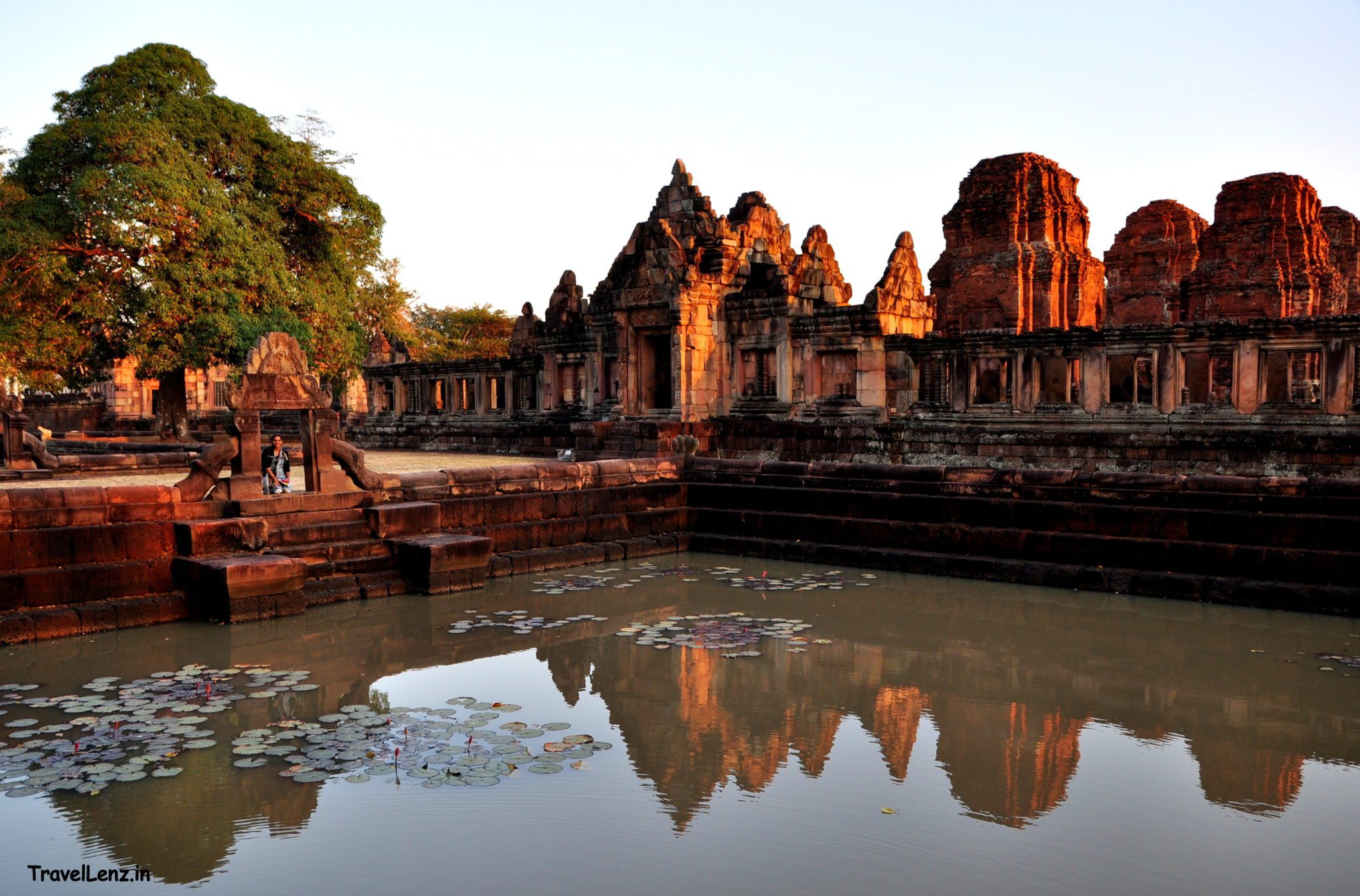Last Updated on January 15, 2021
It was like a village we had driven through back in India. Cleaner, yes. Quieter too. But the simplicity and the playfulness of the children we spotted by the roadside were no different.
We crossed a bridge, drove past Muang Tam reservoir on our left and turned the corner and slowed down. We had pulled into Muang Tam village and, before long, slowed down by a signboard that told us we had arrived at Prasat Muang Tam.
At the entrance gates
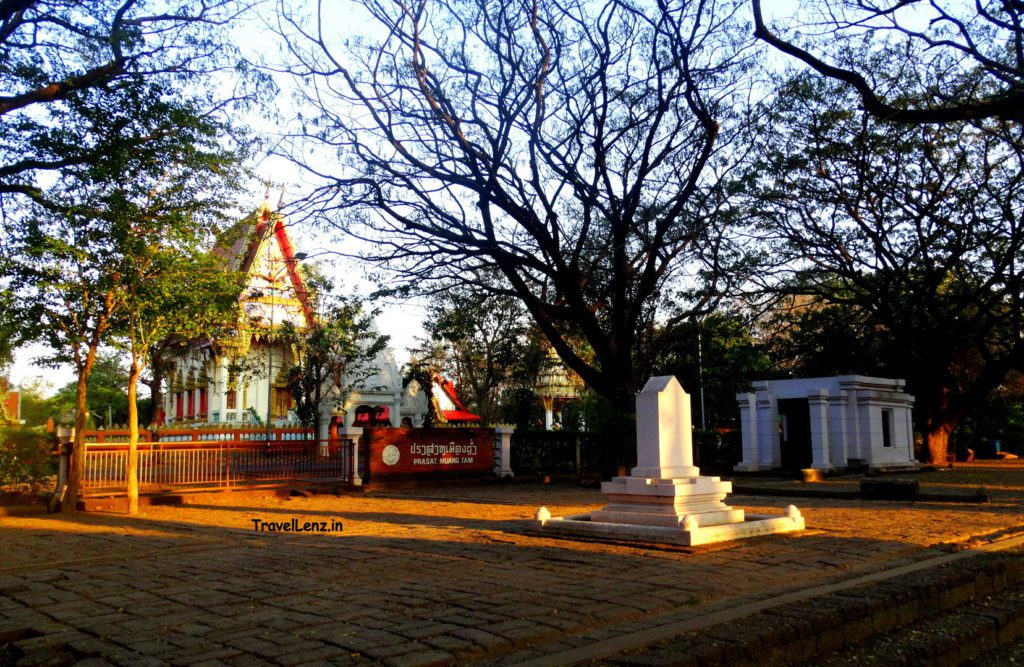
We were just in time for the ticket counter to be open. A perfunctory snap by the stone placard that listed the history of the temple was all it took for us to hurry on inside.
Amidst a thickly lined path of trees, we found ourselves walking before turning right to see the temple entrance before us.
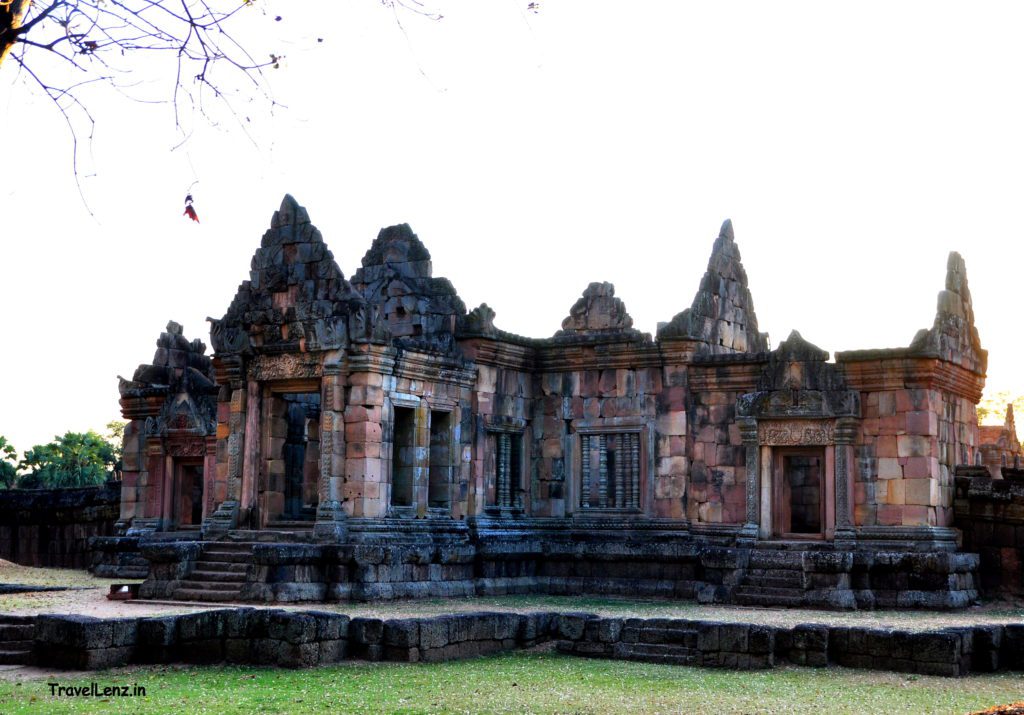
Built in the 10th/11th century and abandoned in the 13th, Muang Tam, is a much quieter area as compared to the more renowned and visited Phanom Rung.
The name itself loosely translates to lower city or lowland castle which is in context to Phanom Rung, which sits on higher ground.
Also read: Our visit to Phanom Rung.
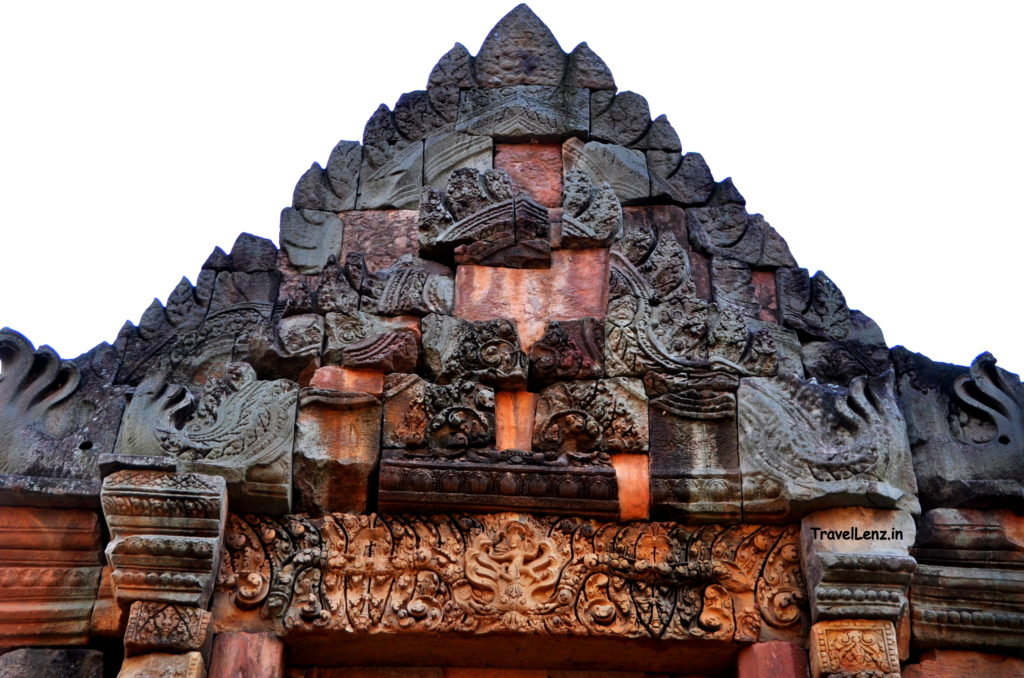
The temple complex was surrounded by a high laterite wall and at the center of each side of the wall was a gate.
We entered through the eastern gate which was the main entrance to the temple. The pediment of the eastern gopura had a beautiful carving of Kaliyamardana – Krishna dancing on the head of Kaliya, the snake.
From the entrance, we passed through a corridor and entered an outer courtyard to be greeted upon by the most beautiful and serene sight.
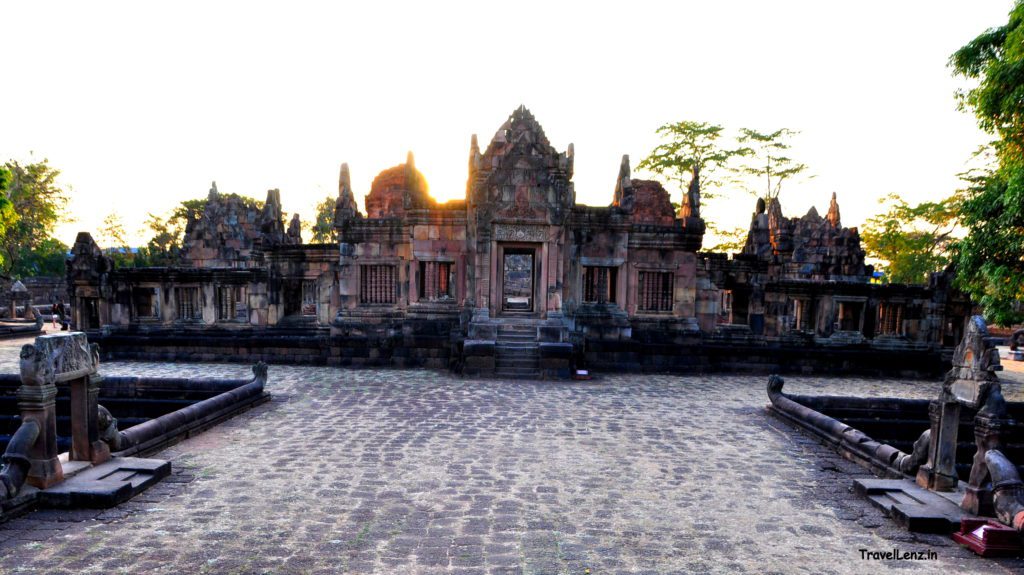
Outer courtyard
The outer courtyard had four L-shaped ponds, larger than the ponds we had seen in Phanom Rung, full of lavender water lilies.
In the golden light of the evening sun, the lotus ponds looked very pretty. The water lilies were gently closing into buds at that dusk hour.

Each pond had laterite steps leading down to the water. Perfectly blending with the more subtle features of the lotus pond were 5-headed Naga balustrades enclosing the pond. The pond must have been used in ancient times to cleanse the visitors before they entered the temple
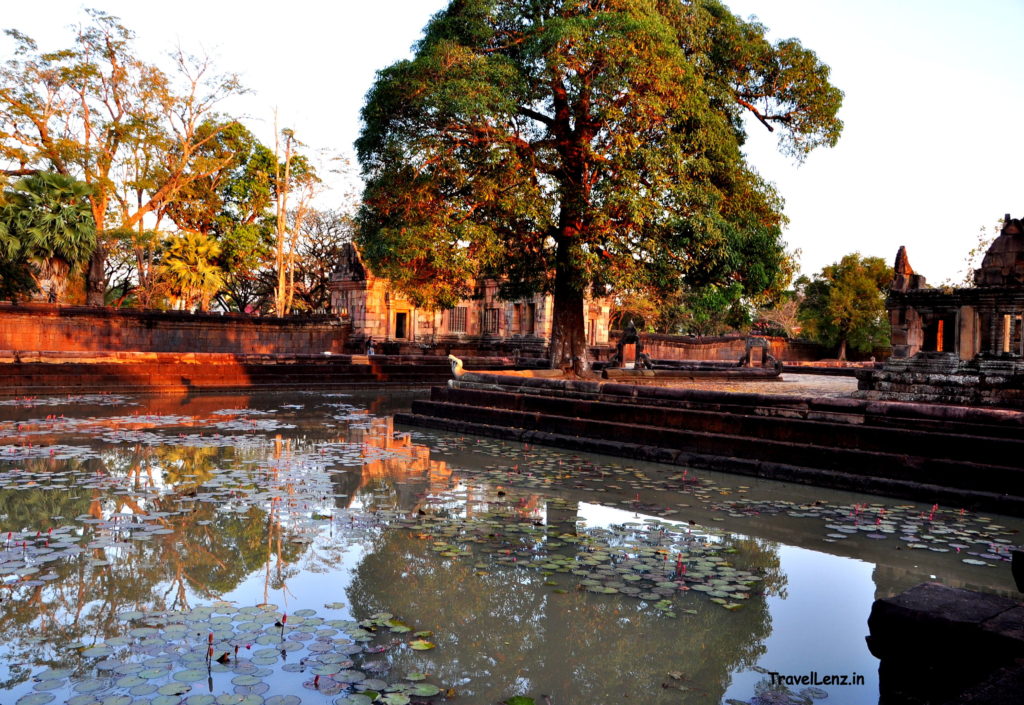
It was so peaceful and we wanted to immerse in the tranquility of the site and linger on longer. But we knew we did not have much time on our hand and so proceeded into the temple
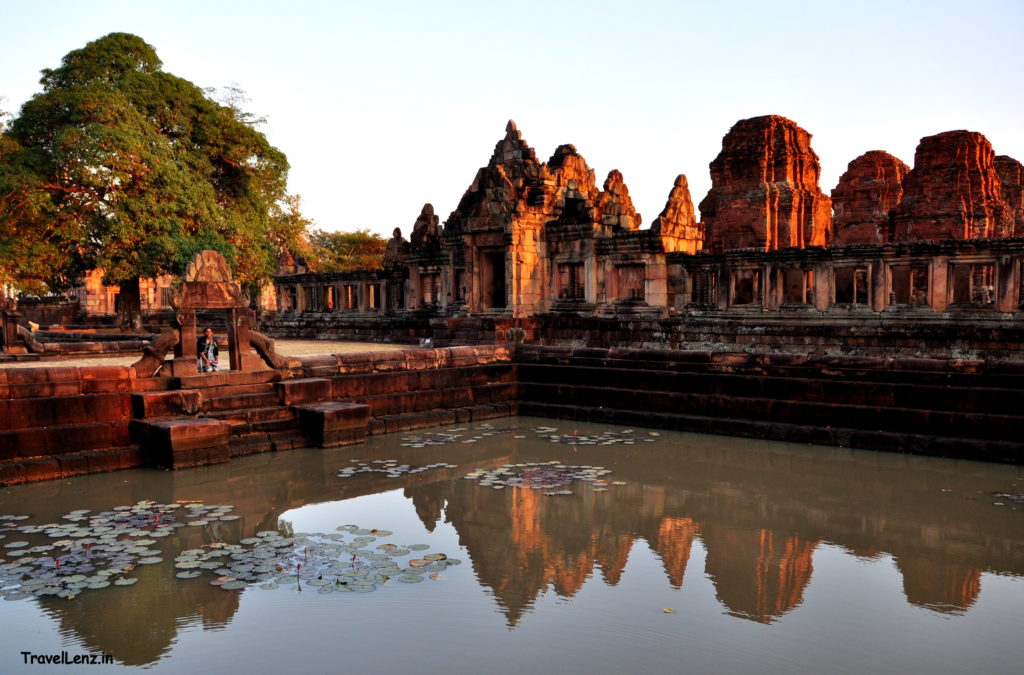
Inner courtyard
We entered a gallery and walked into the inner sanctuary. At the center of the sanctuary were five towers, four would be the correct word as the central main tower had collapsed leaving only its base. Even the four towers surrounding it were almost in a dilapidated state.
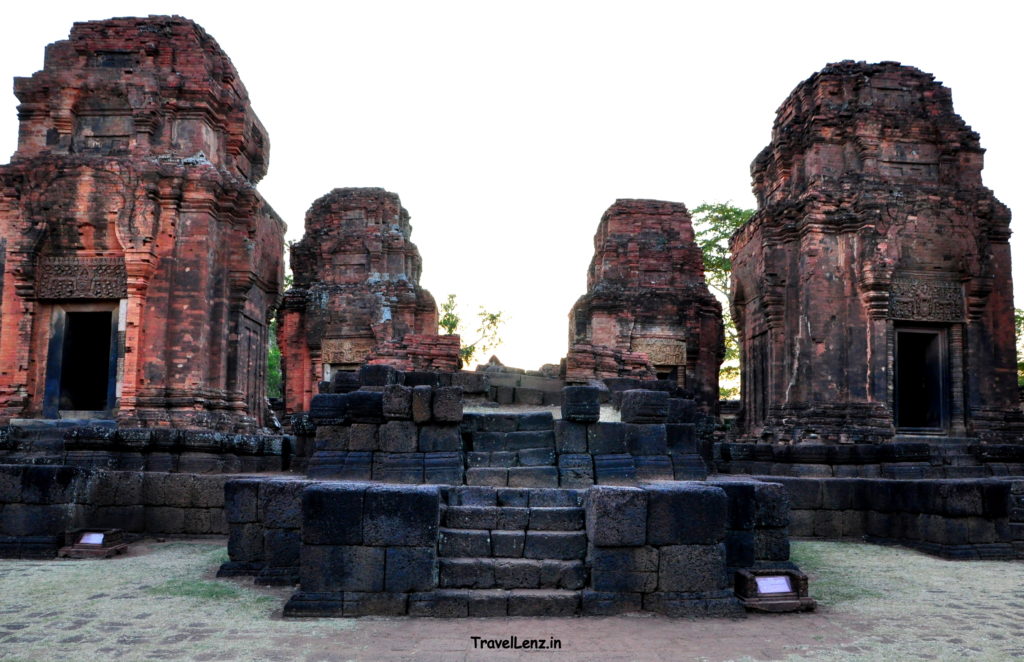
Some of the towers had carved lintels. The lintel above the doorway of the front right tower was that of Uma and Shiva riding the bull Nandi.
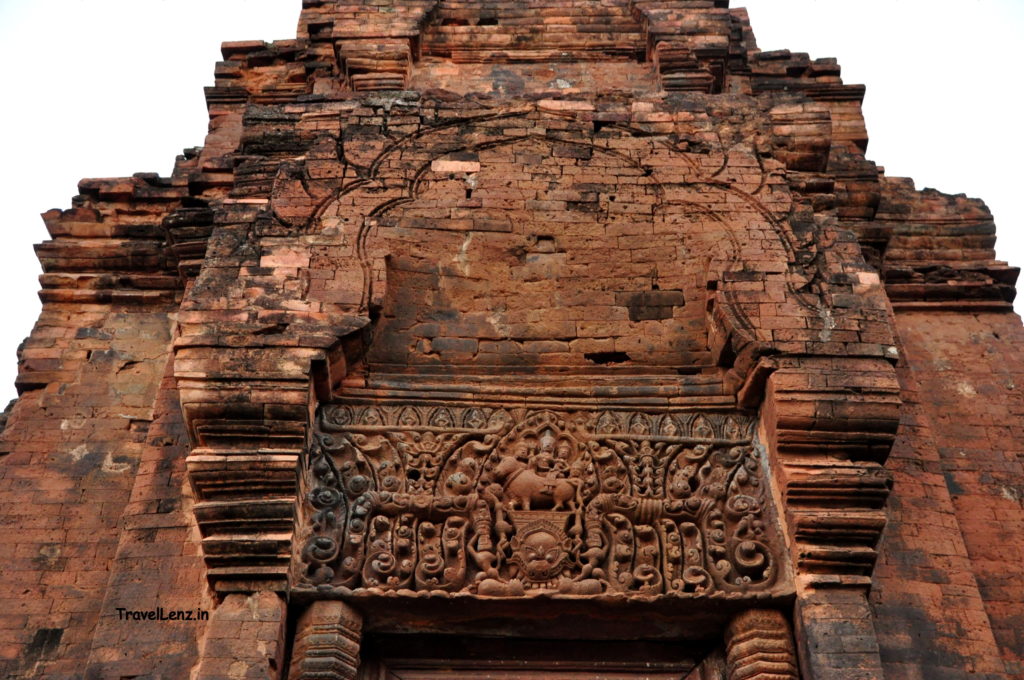
Another carving was again that of Krishna, this time lifting up the Govardhana mountain with his little finger to protect his village from the incessant rain.
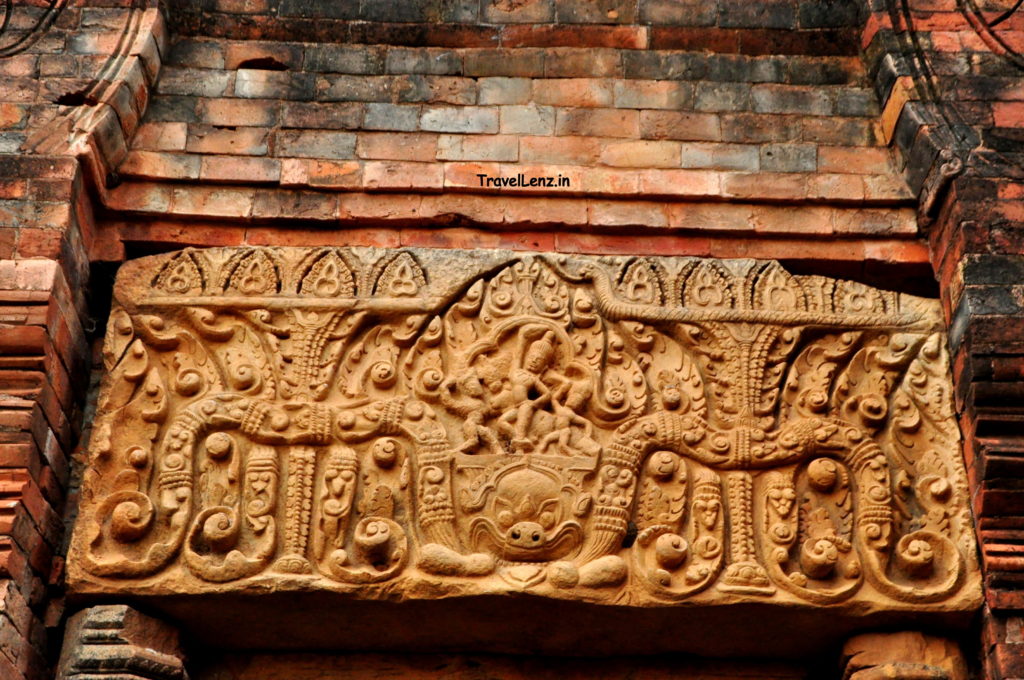
Most of these carvings were placed on top of Kala – lion-faced figures. One such Kala had a human seated on it.
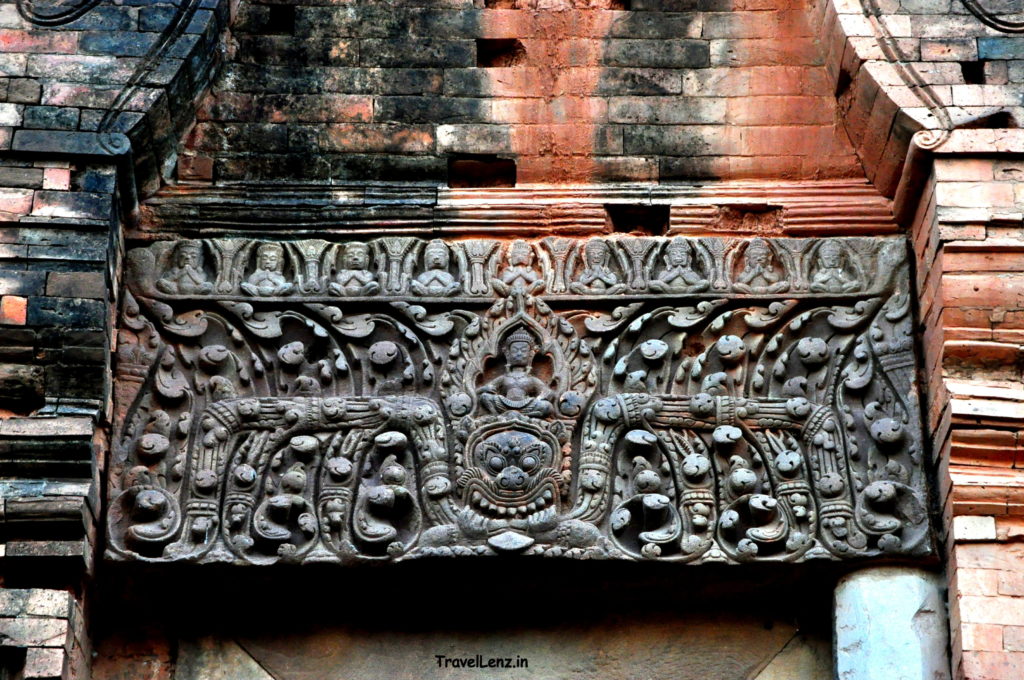
Muang Tam may not have had the scale and a grand entrance like Phanom Rung temple, but it is certainly a glittering spectacle. A tranquil haven of lotus ponds and a temple that once must have drawn in worshippers to its altar.

Telling the tale of the Khmer dynasty at its peak in the 12th century, these two temple complexes boast of the same richness of architectural marvel, albeit at a much smaller scale compared to the Angkot Wat.
The fact that they blend both Hindusim and Buddhism so seamlessly and harmoniously just makes these more of a fascination for an Indian traveller.
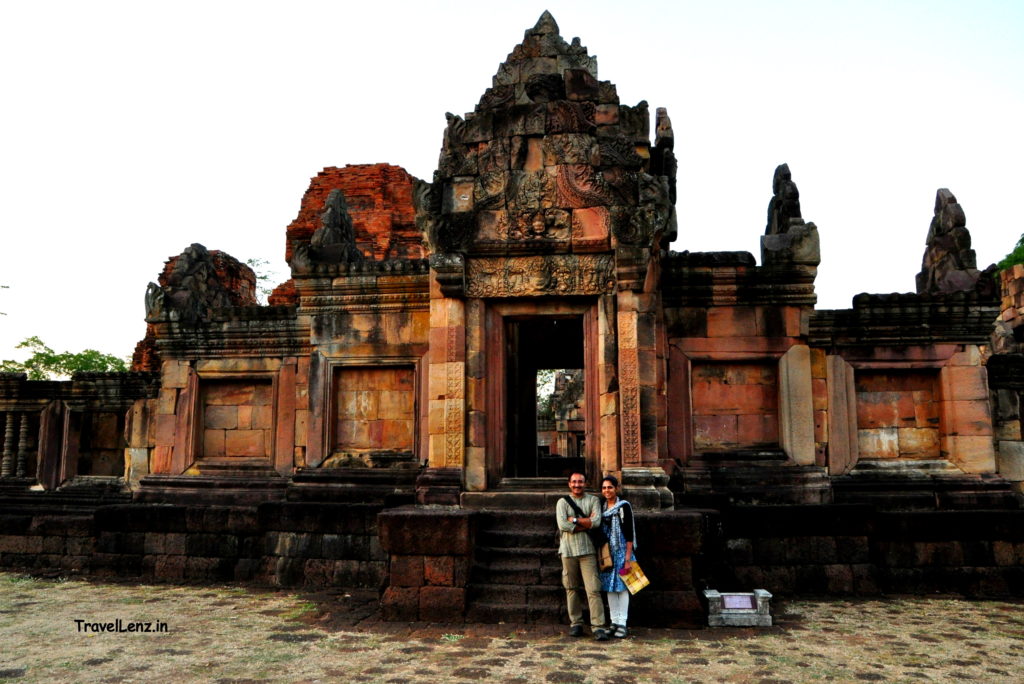
Tomorrow we were travelling north-west to Nakon Ratchasima or Korat, 100 km away, and then from there to visit Prasat Hin Phimai another Khmer jewel.
Read more:


